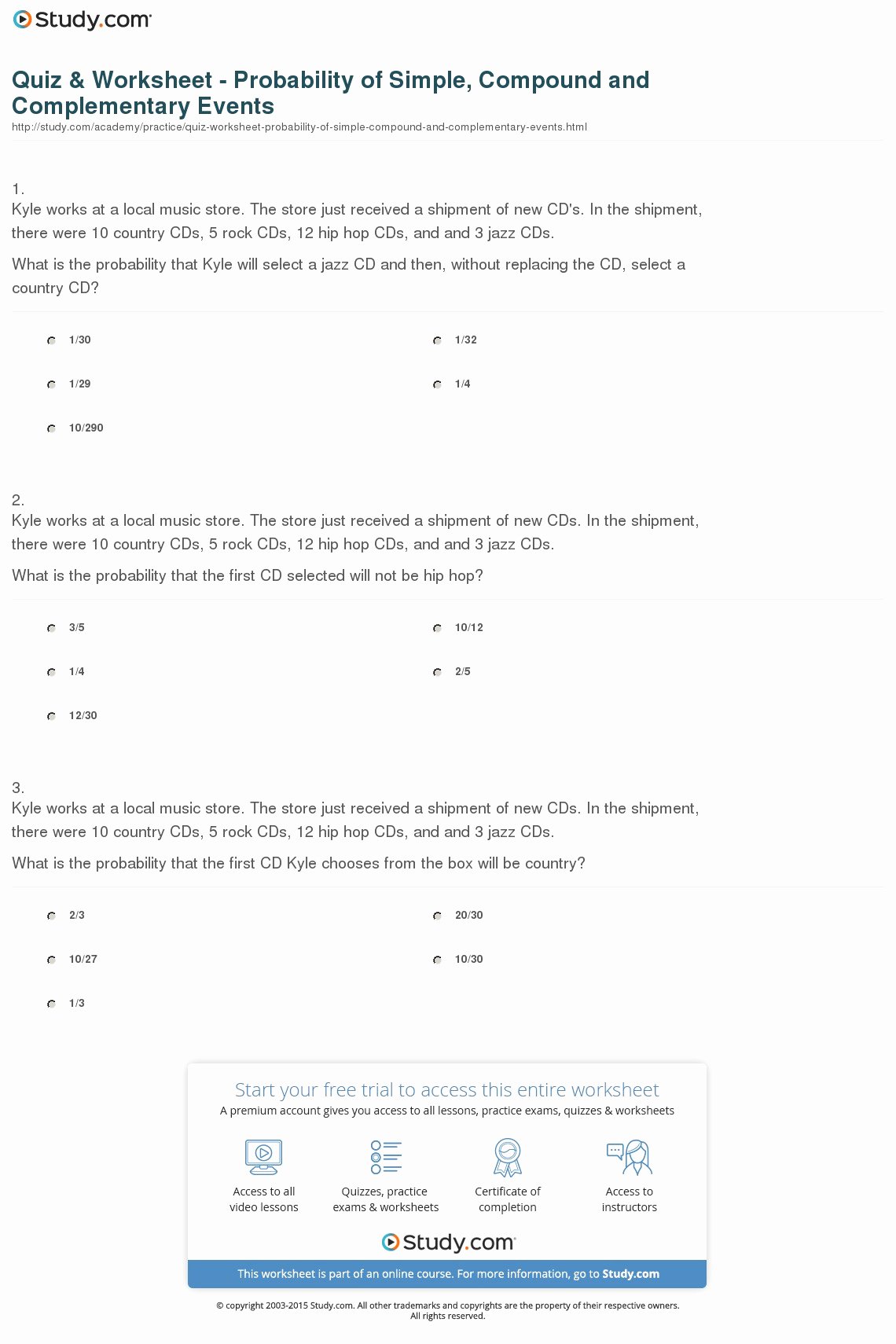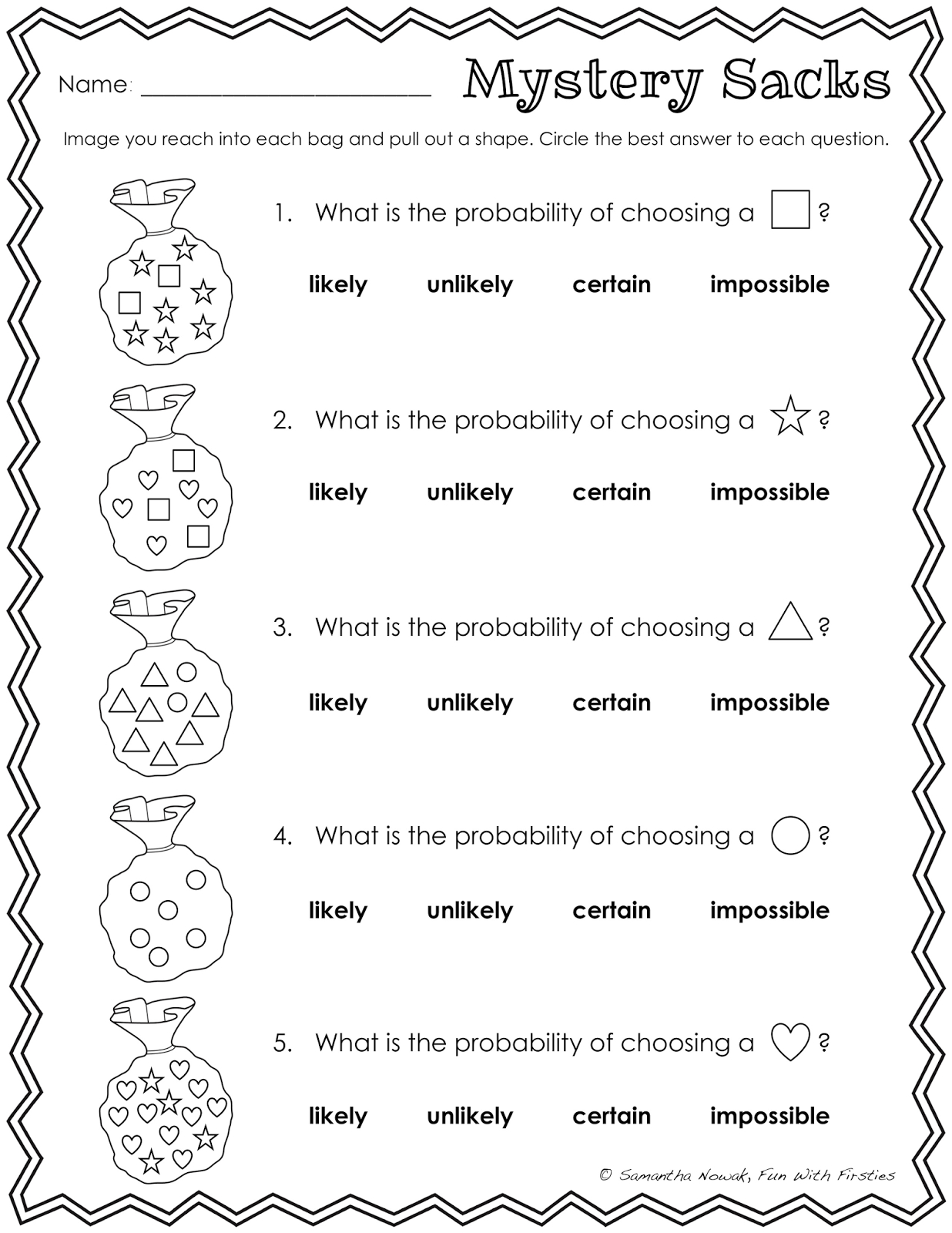


If necessary, repeat with other examples, such as the probability of rolling a number other than a 3, the probability of rolling a number less than 3, etc. The sum of the even outcomes equals the probability of an event. Rolling an even number is called an event. Step 3: Explain that the even outcomes here are 2, 4, or 6. Show how they could also determine this by adding the probability of each even outcome (1/6 + 1/6 + 1/6) to arrive at 3/6 or 1/2 or 50%. They may calculate this by writing the number of favorable outcomes (3) over the total number of outcomes (6) to get 3/6, which should be reduced to lowest terms (1/2). Students should indicate that the probability is 1/2 or 50%. Step 2: Ask what the probability of rolling an even number is. Indicate that when the probabilities of all individual outcomes are added together, the sum is 1. Ask the class to calculate the probability of each outcome as a fraction (1/6 for each). Step 1: Show a single six-sided die to the class. Introduction to Basic Probability and Sampling Optional: Hang a copy of The Power of Probability Classroom Poster printable in your classroom. Optional: The Power of Probability Classroom Poster printableġ. Make a class set of The Power of Probability Worksheet: A Call for Assistants printable.Ģ. Print a copy of the Answer Key: The Power of Probability printable.ģ.Standards Chart: The Power of Probability printable.Answer Key: The Power of Probability printable.The Power of Probability Worksheet: A Call for Assistants printable.One six-sided die (for a demonstration).Add the probabilities of the outcomes that are part of an event to determine the probability of an event.Identify the difference between outcomes and events.Understand that proportions can be used to make predictions about a population based on a sample.


 0 kommentar(er)
0 kommentar(er)
